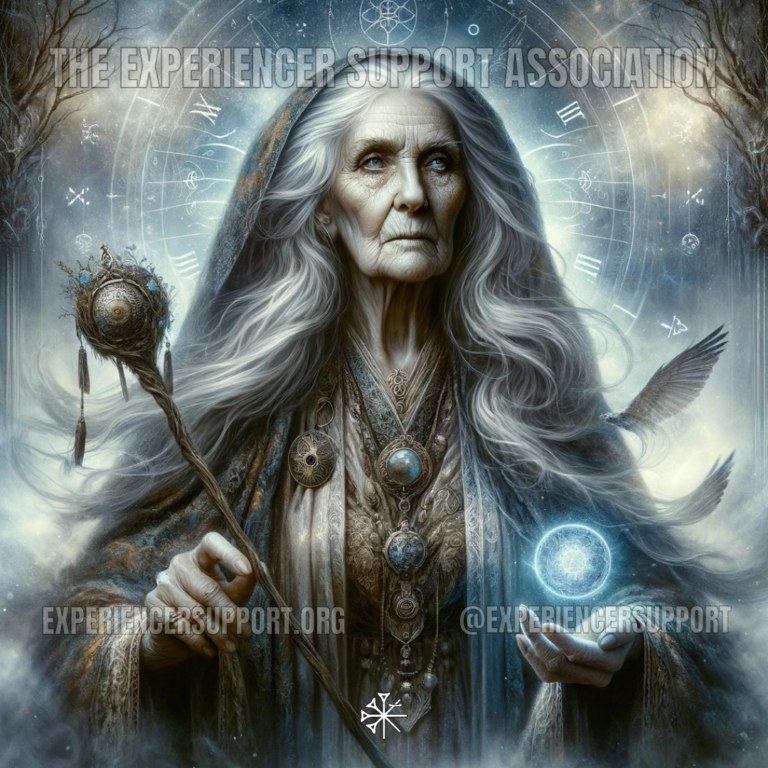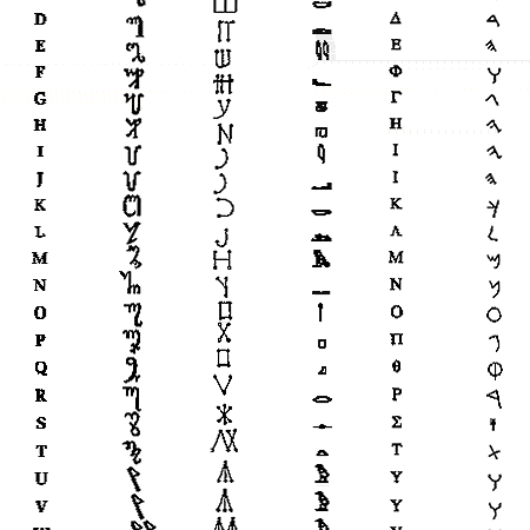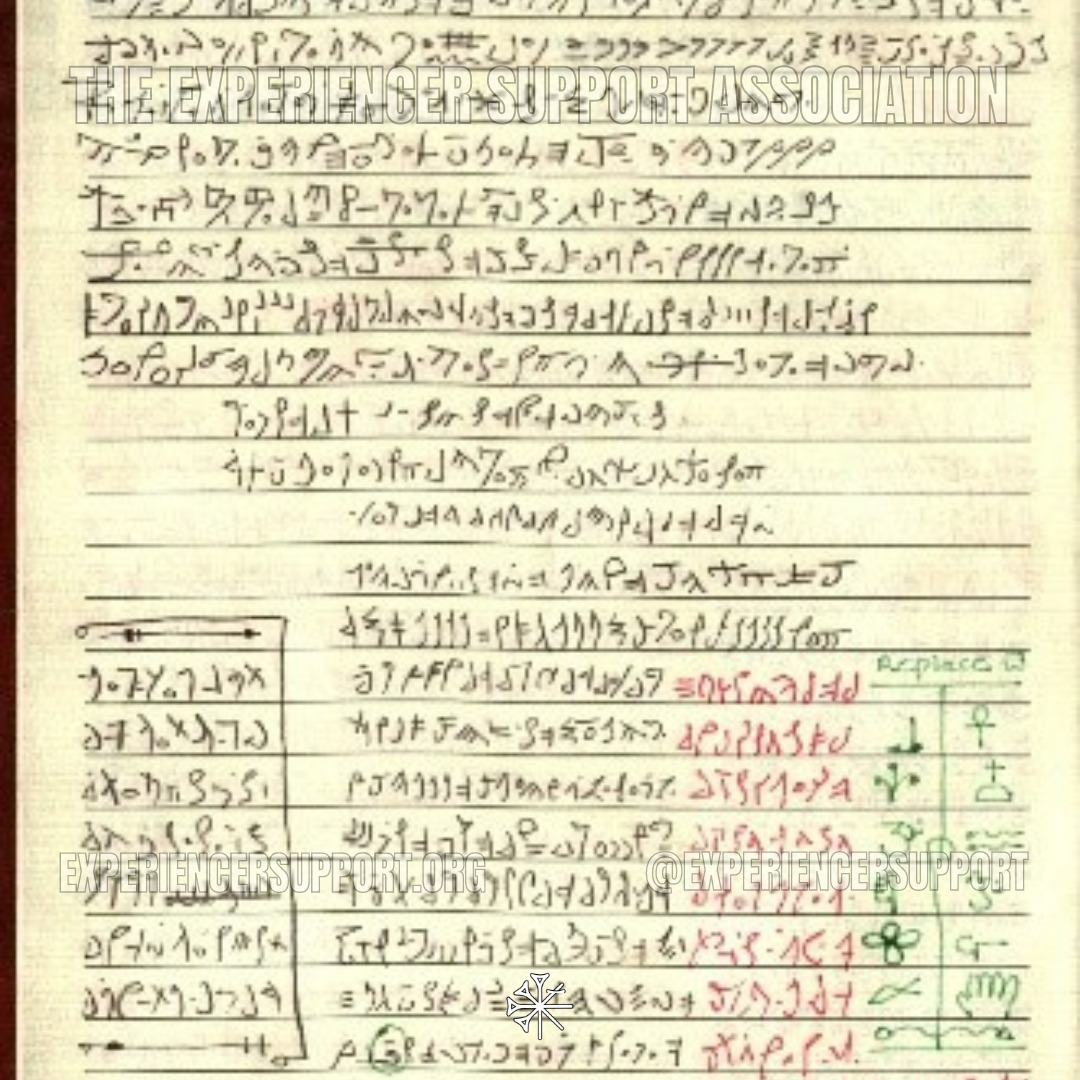Witches, Wizards, and the Church: A Tumultuous History

With my own two eyes, I saw The carnage, the raging and the depravity. I felt the cold, hard breath of regret, The putrid lines of blood and sinew. Then there was only darkness at death’s great banquet, And the freedoms and everlasting love were given over. The darkness had descended upon the hearth of every Witch’s home, And the days of the Crone were no more.
At the beginning of the Dark Ages, being a witch was a life-long experience providing for a community. They helped their community to flourish with their expertise in local herbs and creating local medicinals. They were often midwives and councillors, teachers, and wet nurses. They helped with agricultural knowledge and helped farmers know what the coming seasons would bring. It was a symbiotic relationship between the two spiritual communities for a time. The local clergy and town elders accepted a tradeoff and often tolerated the Pagan way of life. The ceremonies and festivals in the accompanying forestry were often held annually, so their god-fearing neighbours stayed clear of the woods during those occasions. All Hallows Eve became a “thing” because communities were willing to accept a certain level of paranormal activity… People secretly love it, and they know it.
Then something happened, and the Church changed its stance and started looking into the “Witch problem.” I have often wondered why that happened. While investigating my roots, I found a long-standing connection to the Craft. My grandmother on my mother’s side was big into the Craft and the supernatural. My mother, staunchly Wiccan, taught me the Craft basics when I was a child after the Lutheran Church rejected me. My great-grandmother on my father’s side, Chippewa, was a medicine woman and, from what I heard, a witch. So, after my family history became apparent, I went back to history for a closer look.
Many of my relatives of the Pagan persuasion came from Europe. As a history buff and a lover of the anthropology of people, I started to see a likely reason for the middle-age crackdown of the Witching community. So, in Europe, while the Crusades were well on their way. People everywhere were succumbing to diseases they had never seen before. The plagues, the lack of sanitation, and a host of natural disasters gripped people in panic and fear. The Church was losing its support and faith, and something needed to be done. There was rampant crime and desecration of graves and sacred sites. In short, it was a chaotic mess and the perfect platform for religious reform and cleansing.
As the crusading soldiers returned from their tours of duty and went to confession, I imagine they had stories to tell their clergy. Many of the initial stories that would have been told would be of an intimate nature, i.e., watching naked girls during their moon ceremonies or joining said frivolity. Initially, I am sure the Church’s view was “a couple of Hail Marys, and they were set right.” However, as things wore on, the stories from these encounters would have become darker and more disturbing. Things like animal and human sacrifice. Orgies and demonic possessions, virgin sacrifices, children being used and more. The stories would have been graphic and disturbing. The situation was dire than any peasant understood, and community leaders started worrying. Here is the thing: so were the witches.
The Rise of Alchemists and Necromancers in Europe
Europe was starting to see a new breed of witches, wizards, Satanists, and Alchemists. The emergence of the Alchemists started not only the inhabitants of villages and towns but also the pagan community. While some alchemy is used in the Craft, Alchemists are more knowledge-based and tend to care less for the community. It goes against their secretive nature. The modern Alchemist is a student again as new stars and systems appear in the heavens and old ones die out. The old Alchemical artwork you can find online has new clues to follow in those old pages. But I digress; one of the offshoots to and from Alchemy is Necromancy.
What alarmed the Church and pagan communities was their emergence. It was a bad sign and meant that those individuals were a rogue element that was relatively unknown and misunderstood by the Church and community at large. They did not work within the exact boundaries the witches did. Each Witch who is an initiate to the Craft swears an oath to a god or goddess either sanctioned by their coven or one they have chosen as a solitary witch. They also swear to a version of the Reed. The Reed sets out the tenets that all witches adhere to. It is part of the law of 3 and 10-fold. The most important of these tenants is “Do No Harm.” So, the witching community would have been worried and afraid themselves. The omen would have been there, and the community would have closed ranks and tried to hide. This again gave the Church the wrong impression, and the arrests, trials and subsequent fatal consequences ensued.
At the peak of the public hangings and witch burnings, the Catholic Church was approached by several witches and Crones who tried to negotiate a way to end the wholesale slaughter of their coven brothers and sisters and community daughters. Initially, the community would have asked for clemency and maintained autonomy under the Church’s watchful eyes (other than the coven hierarchy, witches did not have ruling bodies) as they had previously enjoyed. They were willing to help the church root out the ones they were looking for and help them translate the myriad of documents they had already seized, which were partially written in magical languages like Theban. By then, however, the Church had already confiscated and deciphered many of the grimoires, diaries, maps, star charts and notes from other witches they had imprisoned, tortured and or converted. The preceding history between the Church and the pagan community became as much about conversion and filling the Church’s coffers as it was about dispensing spiritual justice for a Sin-filled life. Much of the Church’s history is littered with dogmatic thinking and subsequent conflicts.
Eventually, anyone who was a pagan who approached the Church was converted before being allowed to contribute. But the problem with that, I am here to say, is that it meant that the converted witches must renounce their oath to the god or goddess they had devoted their lives to. And since we are referring to the archaic beliefs of the time, that was something other than what you did. Like the mafia, once you’re in… You can say the words, take other oaths, and swear up and down that you have let it go, but by and large, the witches the Church converted and let into their vaults were duplicitous.
How do I know at this point? While I can cite articles and books I have read on the subject, how I know is more interesting. I am a Crone. A Crone, defined by our most popular dictionaries, Webster and Oxford, depicts us as old, ugly, and evil, and they use Hag as an interchangeable word to describe us as well. It is a definition based on another stereotype created by the Church, as both publications are owned by staunchly religious families.
The Crone and the Hag: Definitions and Differences

Being a Crone is something you are born as; it’s a calling. As we age and become increasingly aware of our connection to the earth, our lives become filled with and focused on the occult. It is, in truth, something that gets into your blood. As I stated in my family history, my being born a Crone resulted from centuries of witches. Only a little is known about the Crone because there has only been a small number throughout history, and they are generally very secretive. Like many ancestorial family tree mystics, the Crone spends a lifetime studying and acquiring knowledge. We are few in number primarily because, unlike other traditions, Crones do not have direct descendants who take on the mantle when the Crone passes on. In most cases, they never had children and would take on a student and her successor from the girls locally. This is part of the dance of keeping the balance of power from being monopolized by one family.
Conversely, a Hag is a Crone that has forsaken her oaths and covenants and cares nothing for anything but her own ends, which were selfish and based on a thirst for knowledge of the forbidden arts. In many of the horrific stories told Hags were often said to assist in Satanic practices and writing rituals. They often were the ones practicing the art of Necromancy. Necromancy is the art of reanimating the dead, amongst other things. In many traditions worldwide, it is deemed to be a dark art and forbidden, being seen as a crime against nature and god. The practitioner must be willing to take a life to achieve their aims. It is a life for a life game, whether animals or humans. This is why they frightened both communities, as many of the initial victims were pagan girls.
Being a Crone means little in the modern era. Like many traditions, the Craft has become homogenized, redefined, repackaged, and sold as a commodity. Without community participation, being a Crone is a dying art. And because of this last Paradigm shift, we are a dying breed. As one cycle ends and another begins (there will be more of us down the road), the new energies are producing new results and, with them, a new set of spiritual leaders. The current style of witchcraft is vastly different from our roots and more alchemically based. But we still produce some of the best ghost stories and do all the same weird stuff we have done for centuries, just as the world has come to expect of us. (Truth be told, we love it) And from a historical point of view, they didn’t behave any better even after the Church stepped in. The clergy should have paid closer attention to who they were converting.
In my opinion, and following the various anthropological and archeological discoveries, I believe the Church’s ails began when the Crones entered the religious circles. While I may be a Crone, I hold no illusions about the nature of a Crone or Hag. A Crone, by her/his nature, must skirt the line between light and dark and maintain the higher good first. They must serve both sides. A Hag serves None but their own aims; they will serve the higher good but only if it is at a significant cost to others and to her or his benefit. I know the Church was more interested in what they could learn than administering to a fallen few. The knowledge the witching community had amassed helped the Vatican retrieve sacred items and tomes of forbidden knowledge stolen by the evil forces they vied to control. Treasures and other holy documents and locations of sacred sites. The knowledge the Vatican obtained from those they tortured would have been a reliable source of conflict for any witch trying to convert convincingly. But a few of them did manage it.
Part of the goodie package of being a Crone is the collective knowledge you acquire. In modern spiritual terms, this is a set of Akashic Records, and while not accessible by all, a well-trained Vedic probably could. Since the contemporary Crone does not have a role in modern society, we are left with ecclesiastic or esoteric pursuits to contribute to. A few of mine are past life regression knowledge, understanding and examining the science of mediumship and being a Crone. I am a trained medium and healer( I channel and deal with spirit for ecclesiastic information). I also write ancient scripts from past lives and partially recall them. Some of my manuscripts are written in Theban, which has always been considered a magical language, while other passages are in ancient Greek. Most of my past lives were in Mesopotamia. It is interesting to note that many of our current languages were once considered part of the magical community and not the domain of the philosophical.
The use of Theban was once banned in many countries as the various groups of priests and priestesses vied for control of the populous. It sounds eerily familiar with Big Brother and the current religious jockeying in our current news. The Church was short-sighted in its certainty that the witches they converted were genuinely loyal to their causes and assumed they wouldn’t be duplicitous.


The Vatican’s Secret Archives and Witchcraft Artifacts
The Vatican, in particular, would have been a likely target of those who sought to either get revenge directly or bring the Church down their way using Magick.
I read an article recently ( Hermetics, Facebook) where a spokesperson for the Vatican confirmed that they have had Crones who converted. As to their level of participation in deciphering and translating ancient documents, they do not need citing or verified by the papacy, as they can now be found all over the internet. Many of the sacred documents available on the market have been edited for public consumption by the Vatican.
But because of recent events, and by that, I mean the reconciliation of the priest’s abuses and their partisans’ ongoing stories, I wonder about the converted witches and their access to the most sacred of the Church’s items. The Egyptians have a book of curses, from standard hexes to badass cursing; the East Asian traditions also have their own curses that are not readily available to the public. The Vatican has a collection of all, many of which are extremely old.
Recently, during a routine maintenance of a building in Tibet, they found a secret stash of Sanskrit books, scrolls, and other sacred documents dating back 10,000 years. Amongst them were Angelic seals, to which the Tibetan government returned to the Vatican; their age and current whereabouts are unknown. But the Vatican has them close at home but well out of the range of the darker and more interesting items in their Red Vault. The Red Vault is a storehouse of rooms under lock and key in the basement of the Vatican. This is where they house magical or blessed items that may be haunted or have been reputed to be sacred somehow. It also houses many books and scrolls, tablets, and works of art collected by their own archeological branch over the centuries. Many church elders know stories of strange goings on in the catacombs, and that area is not usually accessed by anyone other than their curators. But it was an excellent way to get an inside look at what the Church did not want in the hands of the pagans. The catacombs that used to be there have long been replaced with more modern structures in the aftermath of the crusades; before that, it was still rock and dirt or tiled floors.
Many of the rites and rituals performed, particularly by the Catholic Church, are more than eerily reminiscent of rites and rituals performed by covens and solitary witches of the Craft the Vatican sought to stamp out. So, their secret Enclave ceremonies may be known to more people than they realize. Many of their altars and churches are set up similarly to sacred pagan sites; theirs just had roofs and bell towers. Much of the procession of the Sabbath or Midnight masses performed even today are reminiscent of the druids and their sacred ceremonies or Christmas’s greatest contested holiday. Which was believed by the pagan community to be a bid to bring the Pagan Yule festivals to an end and not Christ’s birthday. Whatever you believe, the influence of the witches on the religious community has been well established. I suggest that the Crones and witches they believed were not on their side.
There are several ways in which this could have been accomplished. Each newly anointed convert who would have been down there to do scribe duties would have received a minder, like a mother superior. If the Vatican reviewed some of their mother superiors’ diaries, they would see a trail of deception. By using Glamor or slipping their minders sleeping powders, the witches could leave their minders in the dark as they rooted through the various rooms. Even the wards for added spiritual security would have been accessible for a witch. Something as innate as a piece of string could have been used to cast a spell on other items in the area or as an anchor for them to astral project.
Another likely trick of the time, and because of European sanitation, was that they would have used scent bags or puffs they could insert into their sleeves in public areas. It was very fashionable to carry one, and it can often be found in collections of the period’s fashion. These bags or puffs are handy for creating hex bags as many natural ingredients to combat the smell also go into hex bags and powders of ill intent. Whenever possible, a witch of that era would use such items as favours to their minders or the papacy if given a personal audience. They would have used the best materials available, making them sought after.
While I know I continue to paint the Witch’s presence in the Church as unfavourable, I do so with the understanding they were fighting for their survival and not a willing party to the Church’s mandates. Many of the so-called parlour tricks of the Witch came from items like candle spells (anointed candles with runes), witches’ jars, spelled altar crosses and cloths, knot magic and sigils. Books and Grimoires that were burned usually contained spells that would only be enacted by fire. As sigil magic requires you to burn it to release it. The Church either knowingly or naively burned most of the magical books they confiscated, setting any spells hidden within their pages loose. The internet is now littered with documents containing fragments of magical languages from actual spells that are still being researched. The rituals available online are still practiced today, and some of the Lesser Keys of Solomon appear in everyday marketing. The world doesn’t hold as much stock in it and has lost much of its meaning and potency.
.
Ironically, while part of my heritage is pagan-based, I also come from a family of Catholic nuns. Immigrants to Canada when my grandfather was still a young boy. I find the irony interesting, but I am no less proud of them than I am of the rest of my heritage. I have a unique perspective as I took the time to learn about the Catholic religion and culture because of it. While the Vatican and Protestant church leaders spend less time giving in to the “mysticism bandwagon” these days, I wonder if their current ails, at least in terms of the luck they have been having, are more rooted in the past than they know. But no one really believes in the power of witches and the magickal world anymore; it’s still, in the end, just fantasy to severe scholars and those who think to know it’s become a conspiracy to the rest of the nonbelievers.
The tradition of keeping quiet as a Crone was based on a survival imperative. That just is not the case anymore. The world has moved on from much of the mysticism and outdated beliefs that surround witchcraft, and my being a Crone is an opportunity to help change some of those misleading beliefs.

Dawn Marie Peterson
Wherever you are, be there fully.
- Cultural Practices, Religion
- Akashic Records, Alchemy, Astral Projection, Ceremonial Magick, Chippewa, Crone, Crusades, Dark Ages, Egyptians, Hag, Holy See (Vatican), Lutheranism, Mediumship, Necromancy, Occult, Pagan, Paranormal, Past Life Regression, Roman Catholic Church, Sanskrit, Satanism, Seven Seals, The Lesser Key of Solomon, Theban Alphabet, Tibet, Vatican Apostolic Archive, Vatican Necropolis, Vedas, Wicca, Witch, Wizard
-
Dawn Peterson

